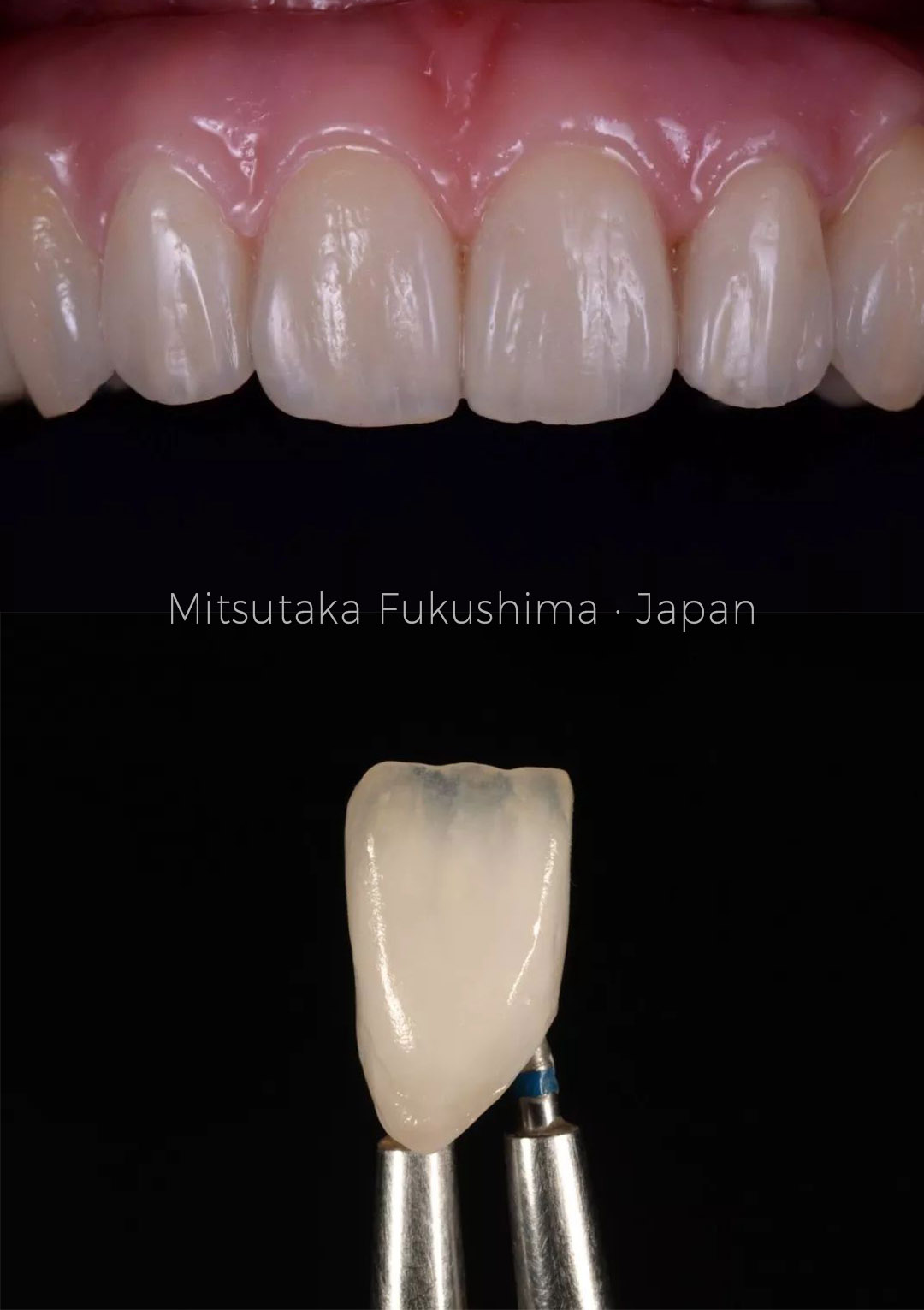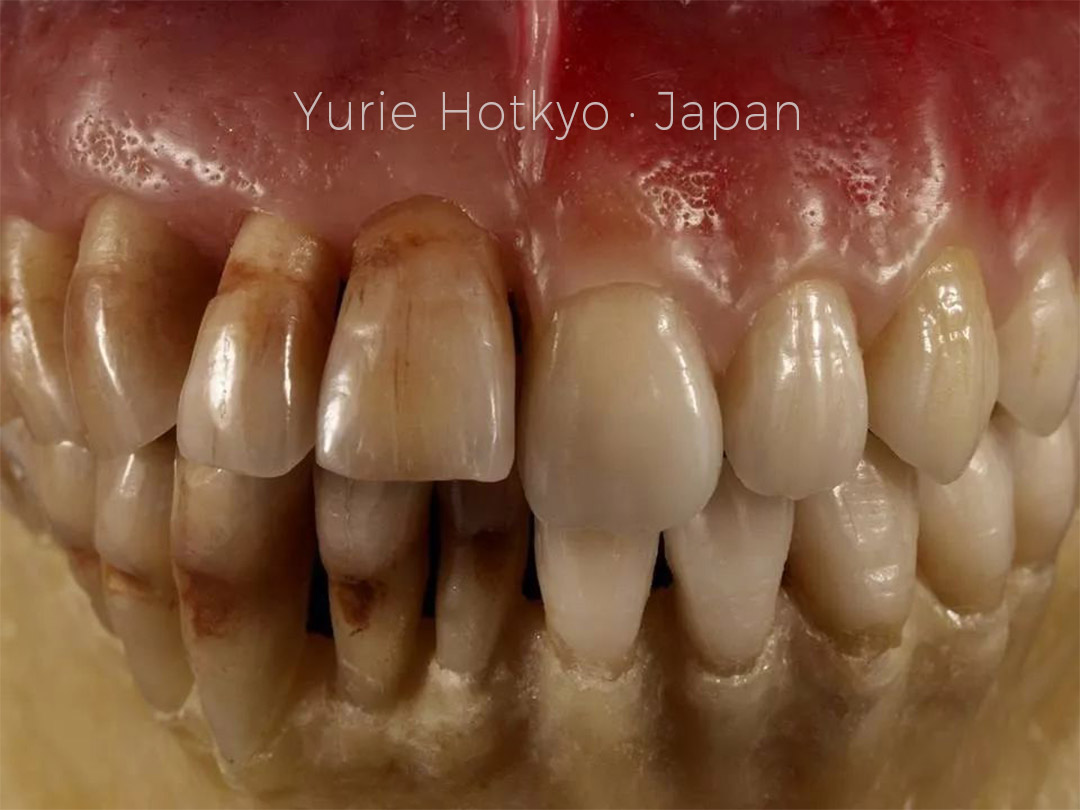-
Email : mike.zhang@baot.biz
Email : mike.zhang@baot.biz
I have asked many Japanese technicians why they strive for perfection. Because good quality also means good price, and...
said Bing Wang from the Peking University School of Stomatology Denture Processing Center.
When I first came to Japan to study, I didn't think there was a big problem with my skills. After studying, visiting, and comparing carefully, I found that the gap was obvious.
In 1988, after graduating from the junior college class of Beijing Medical University in Prosthodontics, I have been working on the front line. In recent years, I have also done some fine processing of precision attachments in the unit, but there are always problems of one kind or another. Now I think it is that the basic skills are not solid enough.
Japanese technicians attach great importance to basic skills

Works by Japanese master Mitsutaka Fukushima
Every Japanese technician is a master of carving teeth. Many people have preserved their carved teeth in different periods. They have a deep understanding of the balance of the distribution of the cusps, the exact position of the occlusal line, and the position of the occlusal point. Japanese teachers often use drawings when explaining. What is the correct look, how do you do it, and the existing problems are clear at a glance.
When carrying out the 3+3 practice carving of the upper anterior teeth, they require the observation of the shape of the alveolar bone, the remaining teeth, especially the shape of the patient's mouth cover, from the shape of the dental arch, the shape of the teeth, the long axis, the angle of inclination and the Key points such as the position of the contact point reflect seven shapes such as square, pointed, and oval. This is really a good teaching method, which has a strong guiding significance for practical work. Not only these, but they also have other teaching methods worth learning from:
01-When making wax-up
In order to control the shrinkage direction when the wax is solidified, the crimping method is generally adopted to greatly increase the edge adhesion.
02-Porcelain crown production
In addition to the same requirements as the usual production of porcelain crowns, in order to reduce the possibility of porcelain chipping, there is also a high requirement for the thickness of the base crown to be consistent, and all of them are carefully observed under a microscope.
03-When stacking porcelain
The saturation of the porcelain powder, the moisture content control and the moisture control requirements of the ceramic brush are very high, and the moisture control should be paid attention to from the opaque layer.
04-When in place
When conducting the fit test, their seating requirements are much higher than ours, and the seating conditions are also much better than ours. Japanese technicians place all the fixed dentures in place, model modification, and sometimes even when making wax models. All are observed under a microscope with a magnification of 10 times, and some wing movement, fulcrum and edge sealing problems that are extremely difficult to detect with the naked eye can be easily found.

Works of Japanese master Yurie Hotkyo
Work and hobbies
What surprised me was that I saw how Japanese clubs select and train new students here. A well-known technician office like Yokohama Dental Research Institute has many applicants every year, but when the technician office accepts new members, it is generally recommended by the teacher of the technician school. I saw that the content of the exam includes interviews, personality tests, tooth type operations, and composition. The exam lasts for a whole day. The topic of this year's composition is "Work and Hobbies". Japanese people attach great importance to hobbies. Oddly enough, they think that a good hobby is good for work.
When I visited the Kanagawa University Affiliated Technician School, I saw that they specially offered drawing, painting and pottery-making courses for students in domestic art schools. This kind of learning will be of great help to the shape design of denture production in the future. In the technician's room in Japan, you can often see the things you design and make. For example, the vacuum device of the technician's desk is usually in the drawer under the table. I saw a technician who bought plexiglass and made a lifting device to adapt to his grinding position and achieve a good vacuuming effect.
Conclusion
This time I came to Japan to study, I really have a lot of impressions. In the past, I was always busy with work in China, and there were many aspects that I did not pay attention to or consider. In particular, I saw that they pursued excellence in every item every day, and did not neglect any link or step in order to meet the requirements. Sometimes they finished the work very late but arrived at the office on time the next day. I admire their patience and perseverance which really impressed me.
I have asked many Japanese technicians why they work so hard and strive for perfection. They generally have two answers. One is to pursue good quality, fully reflect your own value and ability, and at the same time get benefits yourself because good quality also means good price. The other is to strive for excellence for patients, which is also the common aspiration of the vast number of medical workers in our country.
Tags :